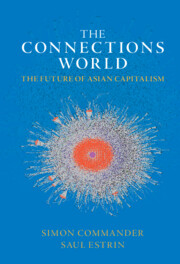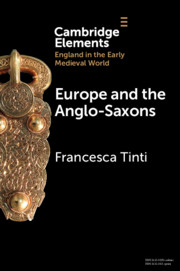Refine search
Actions for selected content:
37 results
8 - Borders
- from Part IV - (Dis)Connected Pasts
-
- Book:
- Fractured Pasts in Lake Kivu’s Borderlands
- Published online:
- 17 July 2025
- Print publication:
- 31 July 2025, pp 249-271
-
- Chapter
- Export citation
5 - Continuities
- from Part III - Connections
-
- Book:
- Fractured Pasts in Lake Kivu’s Borderlands
- Published online:
- 17 July 2025
- Print publication:
- 31 July 2025, pp 171-202
-
- Chapter
- Export citation

Fractured Pasts in Lake Kivu’s Borderlands
- Conflicts, Connections and Mobility in Central Africa
-
- Published online:
- 17 July 2025
- Print publication:
- 31 July 2025
7 - Creating a language-rich environment
-
- Book:
- Intentional Practice with Infants and Toddlers
- Published online:
- 17 June 2025
- Print publication:
- 12 June 2025, pp 167-199
-
- Chapter
- Export citation
10 - Electrical Energy Systems
-
- Book:
- Renewable Energy Engineering
- Published online:
- 08 March 2024
- Print publication:
- 28 March 2024, pp 328-367
-
- Chapter
- Export citation
Chapter 2 - Defoe’s Connections
- from Part I - Life and Works
-
-
- Book:
- Daniel Defoe in Context
- Published online:
- 27 April 2023
- Print publication:
- 11 May 2023, pp 11-18
-
- Chapter
- Export citation
General Editor’s Introduction to the Series
-
-
- Book:
- The Cambridge World History of Genocide
- Published online:
- 23 June 2023
- Print publication:
- 04 May 2023, pp 1-30
-
- Chapter
- Export citation
1 - The Strengths and Fallibilities of Asian Capitalism
-
- Book:
- The Connections World
- Published online:
- 11 October 2022
- Print publication:
- 27 October 2022, pp 1-27
-
- Chapter
- Export citation
3 - The Power of Networks of Connections
-
- Book:
- The Connections World
- Published online:
- 11 October 2022
- Print publication:
- 27 October 2022, pp 66-115
-
- Chapter
- Export citation

The Connections World
- The Future of Asian Capitalism
-
- Published online:
- 11 October 2022
- Print publication:
- 27 October 2022
7 - Connections in Death
-
-
- Book:
- Architecture in Ancient Central Italy
- Published online:
- 31 March 2022
- Print publication:
- 07 April 2022, pp 174-199
-
- Chapter
- Export citation
Introduction
-
- Book:
- Judaism, Antisemitism, and Holocaust
- Published online:
- 24 March 2022
- Print publication:
- 31 March 2022, pp 1-8
-
- Chapter
- Export citation

Judaism, Antisemitism, and Holocaust
- Making the Connections
-
- Published online:
- 24 March 2022
- Print publication:
- 31 March 2022
Chapter 4 - Structural Connectivity of the Insula
- from Section 1 - The Human Insula from an Epileptological Standpoint
-
-
- Book:
- Insular Epilepsies
- Published online:
- 09 June 2022
- Print publication:
- 24 March 2022, pp 31-39
-
- Chapter
- Export citation
Coercing Mobility: Territory and Displacement in the Politics of Southeast Asian Muslim Movements
-
- Journal:
- Itinerario / Volume 45 / Issue 3 / December 2021
- Published online by Cambridge University Press:
- 16 December 2021, pp. 330-344
-
- Article
- Export citation
Chapter 6 - Actor-Network Theory and Routine Dynamics
- from Part I - Theoretical Resources for Routine Dynamics Research
-
-
- Book:
- Cambridge Handbook of Routine Dynamics
- Published online:
- 11 December 2021
- Print publication:
- 16 December 2021, pp 73-84
-
- Chapter
- Export citation
Chapter 12 - Professional networks
- from Part 4 - Making connections
-
-
- Book:
- Teaching Secondary History
- Published online:
- 15 October 2021
- Print publication:
- 22 November 2021, pp 266-278
-
- Chapter
- Export citation

Europe and the Anglo-Saxons
-
- Published online:
- 29 July 2021
- Print publication:
- 26 August 2021
-
- Element
- Export citation
Slavery and Its Transformations: Prolegomena for a Global and Comparative Research Agenda
-
- Journal:
- Comparative Studies in Society and History / Volume 63 / Issue 3 / July 2021
- Published online by Cambridge University Press:
- 29 June 2021, pp. 566-598
-
- Article
-
- You have access
- Open access
- HTML
- Export citation
Spatial analysis for political scientists
-
- Journal:
- Italian Political Science Review / Rivista Italiana di Scienza Politica / Volume 51 / Issue 2 / July 2021
- Published online by Cambridge University Press:
- 11 May 2021, pp. 198-214
- Print publication:
- July 2021
-
- Article
- Export citation
